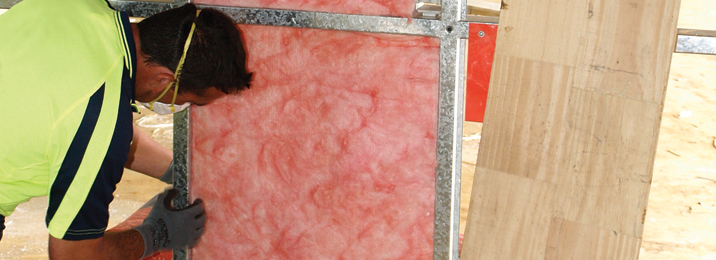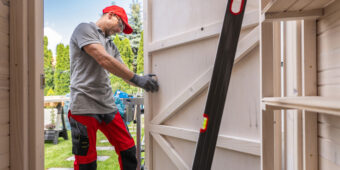New standard for installing insulation
23 Dec 2016, Featured, LBP & Regulation

Under Construction now includes all compulsory Codewords articles to help LBPs stay up to speed and earn their required points. This month’s article is required for those who hold a Carpentry, Foundations, Site or Design licence
Under the new skills maintenance scheme, reading Codewords articles relevant to your licence and answering the corresponding questions is a mandatory part of skills maintenance (for those who have renewed their licence since 2 November 2015).
This month, Under Construction is featuring Codewords’ article about the new Standard for installing insulation.
Once you’ve read the article, go to the LBP website (under Codewords Issue 75) to answer the associated questions.
Installing insulation in residential buildings
The New Zealand Standard for installing insulation in residential buildings has gone through a major revision. The new Standard is NZS 4246:2016 Energy efficiency – Installing bulk thermal insulation in residential buildings. This replaces NZS 4246:2006 Energy efficiency – Installing insulation in residential buildings.
The Standard provides guidance for the correct installation of insulation products by any installer, including DIY installers, in order to achieve high-quality and safe insulation installations in buildings.
How has the standard changed?
The Standard has been updated, extended and now provides additional guidance on installing insulation:
• In steel-framed installations.
• Under concrete slabs on the ground.
• Around downlights, particularly where there have been significant technology advances.
Additional diagrams, photos and figures have been included to provide easyto- understand, step-by-step guidelines for installing insulation in new homes, and for retrofitting insulation in existing residential buildings.
Products and applications covered include:
• Loose-fill product (such as wool, mineral wool or cellulose fibre) for insulating walls and ceilings.
• Segment and blanket products (such as polyester, wool or mineral wool) for insulating in walls, ceilings and floors.
• Rigid sheet insulation products (such as expanded or extruded polystyrene (eps or xps) and polyisocyanurate (pir) for insulating walls, ceilings and floors).
• Semi-rigid insulation (such as wool, mineral wool, polyester) for insulating walls, ceilings and floors.
• Pipe insulation (such as pre-formed tubular foam).
• Hot water cylinder wraps (such as wool, mineral wool or polyester blanket with cloth or foil-backing).
• On-ground vapour barriers.
Ban on foil insulation (retrofit or replacement)
Foil insulation continues to be excluded from the scope of the revised Standard. A ban on retrofitting or replacing foil insulation in residential properties came into force on 1 July 2016 to reduce safety risks associated with installing this product. Read more on the ban on installing or repairing foil insulation in residential buildings on the Ministry of Business, Innovation and Employment’s (MBIE) Building Services website.
Meeting everyone’s needs
Installing insulation correctly means it performs effectively and doesn’t compromise the durability of your building, or put the health and safety of installers and occupants at serious risk. In addition, the Standard is cited in the Residential Tenancies (Smoke Alarms and Insulation) Regulations 2016. If you have rental properties it’s important you read and comply with the Standard when installing insulation in those properties.
Where to find the revised standard
The revision of the Standard was commissioned by the Energy Efficiency and Conservation Authority and is publicly available on MBIE’s Tenancy Services website. To download the Standard, go to the homepage, select ‘Maintenance & inspections’, then ‘Insulation’. At the bottom of the page there is a link to a PDF of the Standard.
Register to earn LBP Points Sign in



